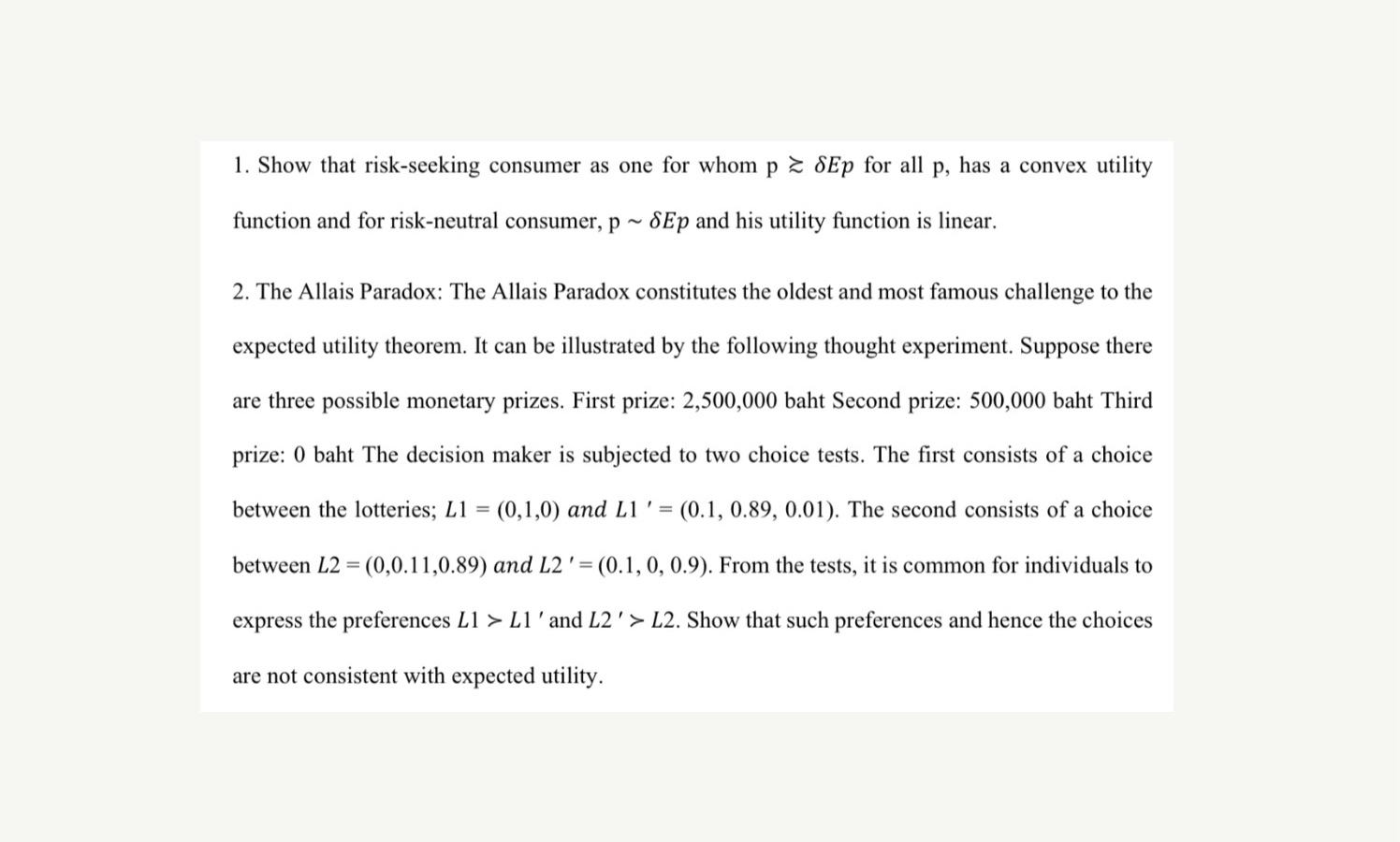Question
1. Show that risk-seeking consumer as one for whom p>= delta multiply Ep for all p, has a convex utility function and for risk-neutral consumer,p~
1. Show that risk-seeking consumer as one for whom p>= delta multiply Ep for all p, has a convex utility function and for risk-neutral consumer,p~ delta multiply Ep and his utility function is linear.2. The Allais paradox: The Allais paradox constitutes the oldest and most famous challenge to the expected utility theorem. It can be illustrated by the following thought experiment. Suppose there are three possible monetary prizes. First prize : 2,500,000 baht second prize: 500,000 baht Third prize : 0 baht The decision maker is subjected to two choice tests. The first consists of a choice between the lotteries; L1=(0,1,0) and L1' =(0.1,0.89,0.01). The second consists of a choice between L2=(0,0.11,0.89) and L2' =(0.1,0,0.9). From the tests, it is common for individuals to express the preferences L1 > L1' and L2'>L2. Show that such preferences and hence the choices are not consistent with expected utility.

Step by Step Solution
There are 3 Steps involved in it
Step: 1

Get Instant Access to Expert-Tailored Solutions
See step-by-step solutions with expert insights and AI powered tools for academic success
Step: 2

Step: 3

Ace Your Homework with AI
Get the answers you need in no time with our AI-driven, step-by-step assistance
Get Started


